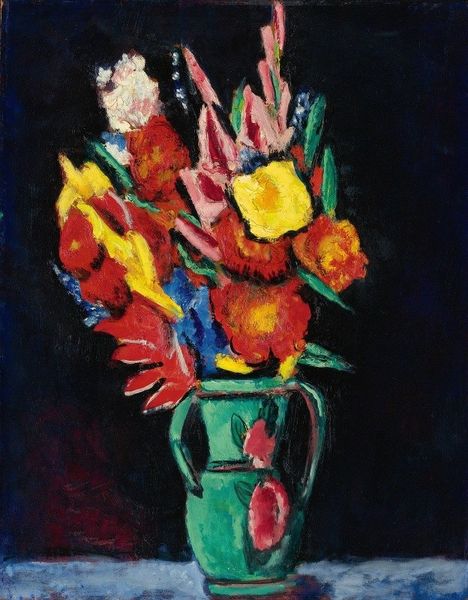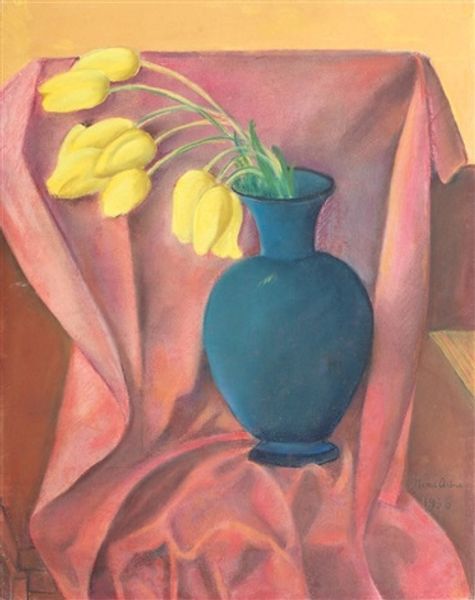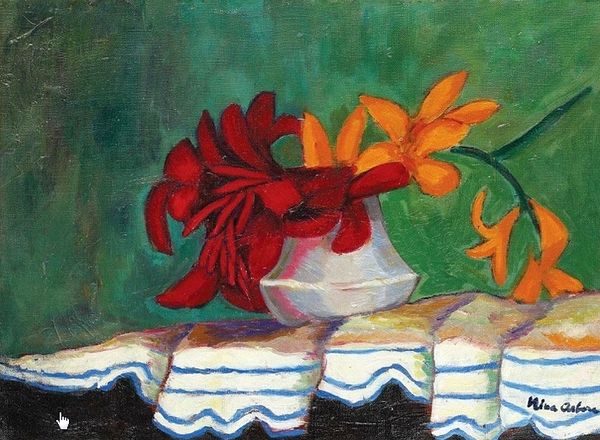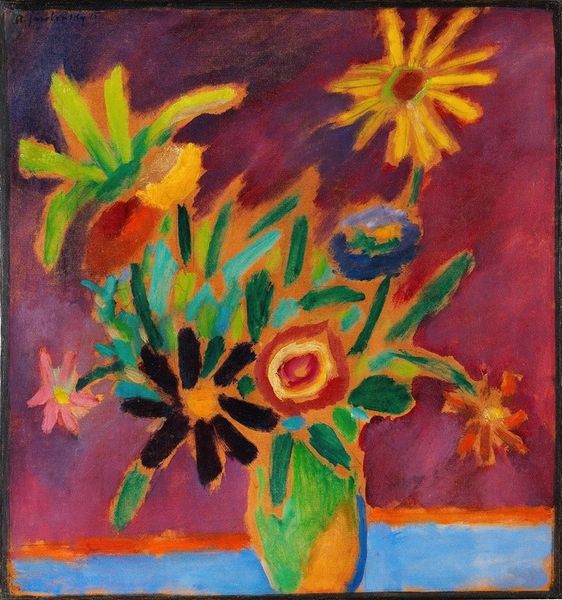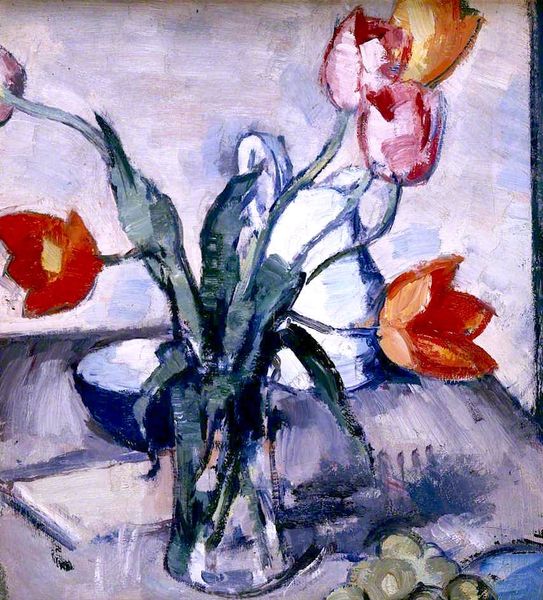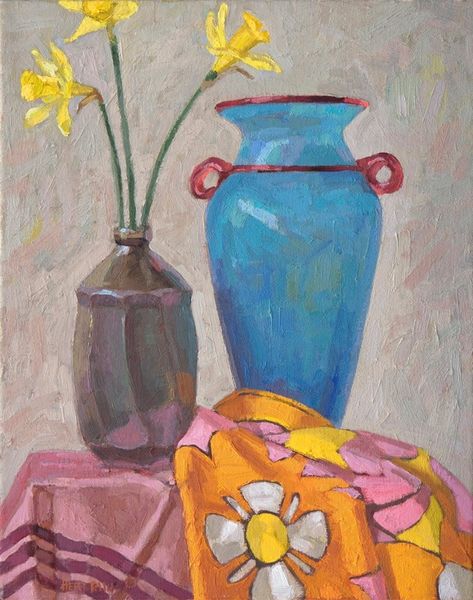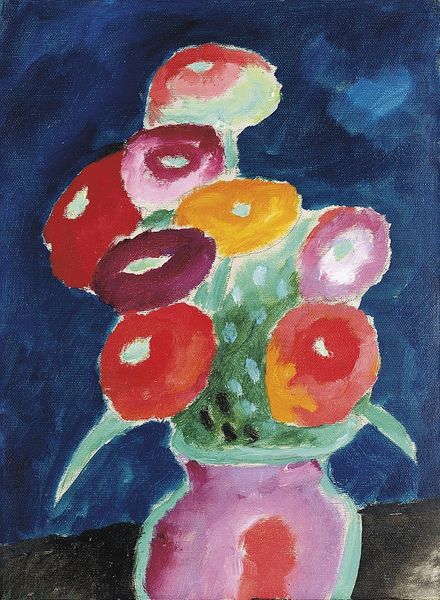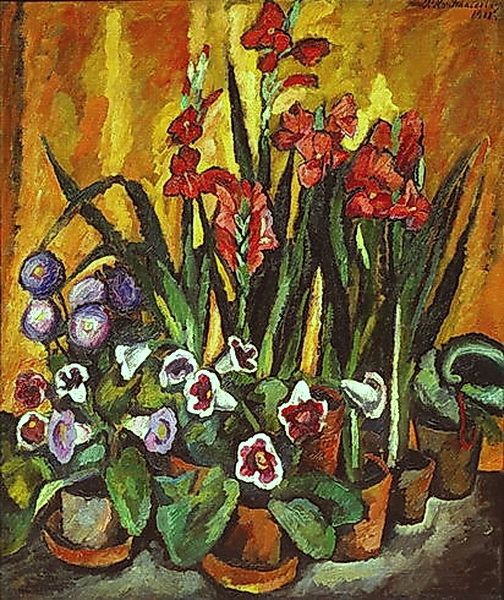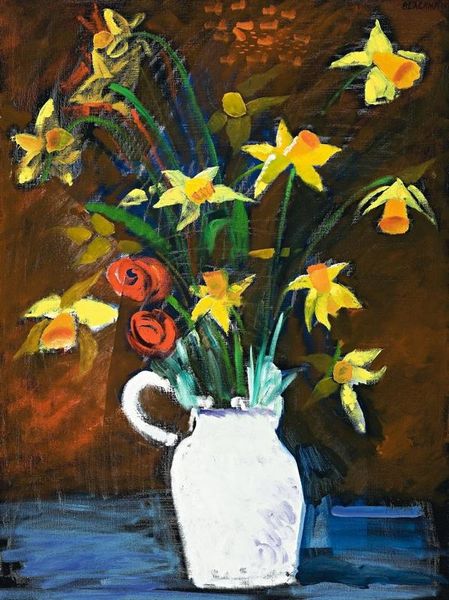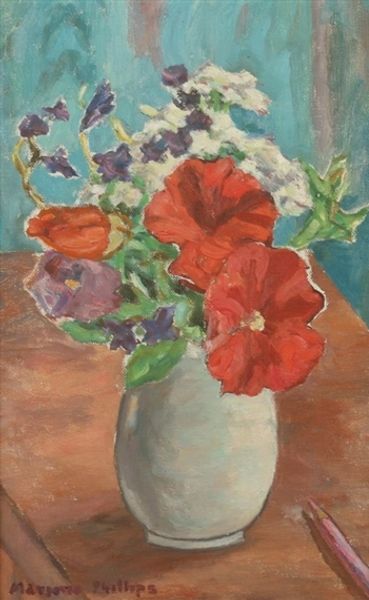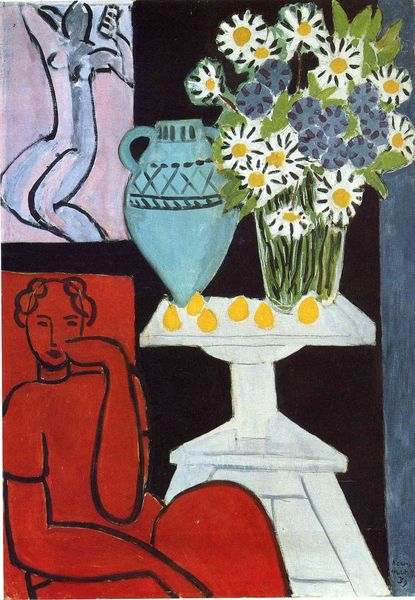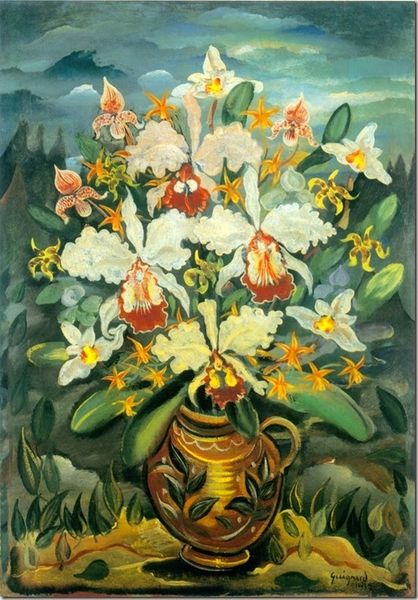
painting, acrylic-paint, photography
#
still-life
#
painting
#
pop art
#
acrylic-paint
#
photography
#
neo expressionist
#
acrylic on canvas
#
geometric
#
modernism
Copyright: Radi Nedelchev,Fair Use
Curator: Radi Nedelchev created this vivid “Still Life with Flowers” in 1967 using acrylic paint. Editor: It's striking how the vibrant blooms jump off the canvas against that moody, dark background. There's an almost electric feel to it, wouldn't you agree? Curator: Absolutely. What fascinates me is the social context. In the late 60s, artists often embraced still life to explore the changing cultural landscape and domestic values of the era. It was a moment of re-evaluating traditional representations in the face of political and social upheaval. Editor: I see your point. But on a purely visual level, consider the bold geometric pattern of that tablecloth. The artist uses these crisp lines in contrast to the organic curves of the flowers— a push-and-pull relationship that really activates the surface. And the impasto, you can feel its materiality. Curator: And don't forget, still life paintings served as demonstrations of wealth, but I also view how the museum's acquisitions can impact perceptions, elevating what was once commonplace. The work seems to straddle Pop Art, with the boldness and flat color, and almost a Neo-Expressionist handling. The politics of taste at play… Editor: Perhaps. Still, the way Nedelchev balances the formal components, it generates an interesting tension, between flatness and depth and stillness and, again, energy. The work doesn’t rest. Curator: It is intriguing how these flower paintings found a home with modernists, they are beautiful of course, and speak to cultural currents. These visual elements, amplified in a modernist treatment, gave agency to many artists. The presentation challenges conventional ideas of feminine domesticity. Editor: True. In the end, it’s that formal complexity mixed with vivid colour that sticks with me. There's something very emotionally resonant there. Curator: Yes. And situating this work within its period, reveals a nuanced interaction of artistic tradition, cultural commentary, and the institutional dynamics that still echo today.
Comments
No comments
Be the first to comment and join the conversation on the ultimate creative platform.
